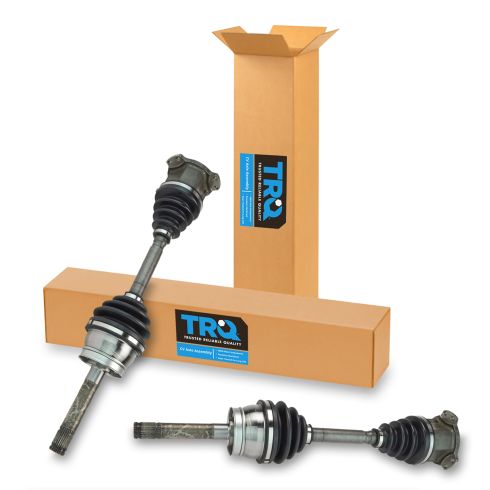1AACS00210-Nissan Frontier Xterra Front Driver & Passenger Side 2 Piece CV Axle Assembly Set TRQ CSA82541

Replaces
2001 Nissan Xterra Front Driver & Passenger Side 2 Piece CV Axle Assembly Set TRQ CSA82541

Product Reviews
Loading reviews
5.00/ 5.0
3
3 reviews
If you need new ready to go axles these are the ones.
October 14, 2021
Hard job to do but the parts matched up perfectly and are working great.
Will save you some money and are as good a quality product around.
Perfect fit, great customer service
November 16, 2021
They were a perfect fit for my Nissan Xterra. The video for replacing them was detailed enough to do the job. I would have saved some time though if it were made more clear to remove the shock before trying to remove the axle. I did receive an axle at first with a small hole in the boot, but when just inquiring if it was safe or not, they just sent a new one, no charge, no questions asked. The new one appeared to be in perfect condition, so this deserves 5 stars.
January 23, 2023
Good price and good product. Fast shipping
Customer Q&A
Was it for a 1999 frontier 4x4?
January 23, 2022
10
No I don't have that car any more
January 23, 2022
Ren W
10
No... it was a 2000 Nissan frontier SE
January 24, 2022
V S
10
Yes, this part will fit your vehicle.
January 24, 2022
Ricale A
CV AXLE for 03 Pathfinder the as03xterra?
February 20, 2022
10
Yes, this part will fit your vehicle.
February 21, 2022
John D
Will it fit a 4x4 supercharged?
April 16, 2023
10
Please provide the year make and model of your vehicle so we can confirm fitment, thank you.
April 17, 2023
Jessica D
10
02 4x4 frontier
May 6, 2023
Virrey L
10
These parts are listed to fit the 2002 Nissan Frontier.
May 8, 2023
Kemal S
Nissan is a registered trademark of Nissan Motor Co., Ltd. 1A Auto is not affiliated with or sponsored by Nissan or Nissan Motor Co., Ltd.
See all trademarks.








